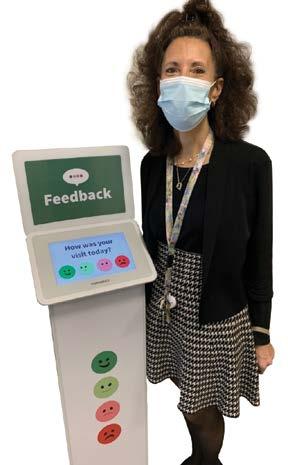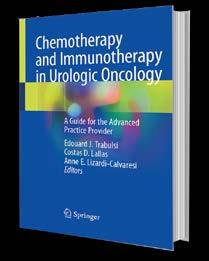
3 minute read
Faculty Contribute to Classic Medical Textbook Happy or Not?
Happy or Not?
Improving Urology Patient Satisfaction
A sample report generated from our HappyOrNot® kiosk. The significant negative response noted on Thursday was the morning after a major Philadelphia snowstorm.
Kiosk provides immediate feedback.
Patient satisfaction is important and increasingly used as an indicator for measuring quality in healthcare. Patient satisfaction can influence clinical outcomes, patient retention, and impact medical malpractice claims. These metrics are now being linked to financial reimbursement from Medicare and other insurers, and poor survey results could result in reduced reimbursements. As part of Hospital Value-Based Purchasing Program, the Centers for Medicare and Medicaid Services (CMS) is withholding 1% of Medicare payments, 30% of which are tied to H-Caps survey scores according to the American Medical Association Journal of Ethics (AMA J Ethics. 2015;17(7):616-621). The proportion of the payouts that is withheld from hospitals will undoubtedly increase over time.

Since 2008, CMS has used the Hospital Consumer Assessment of Healthcare Providers and Systems (HCAHPS) survey. This is a series of 32 questions administered to a random sample of hospital patients about their care experience. HCAPS survey results are posted on the CMS “Hospital Compare” website. Our Jefferson Medical Group (JMG) currently relies on Press-Ganey Surveys to evaluate our outpatient experiences.
Concerns have been expressed about the validity and implementation of patient experience measures and surveys such as HCAPS and PressGaney. Patient experiences are based on patients’ expectations of care as opposed to objective measures of experience, and these perceptions may or may not correlate with technical quality of their care. These voluntary surveys are often long and are often administered weeks after the experience. Selection and recall bias may be present in the responses of those with very positive or very negative experiences.
In our quest to assess patient satisfaction real time, we have placed a proprietary kiosk at the check-out area of our Center City outpatient urology office located at 33 S. 9th Street (833 Chestnut Building). The system is known as HappyOrNot® and consists of a feedback terminal for measuring customer satisfaction. The terminals consist of four smiley-faced buttons that customers are invited to press to indicate whether they are very happy, happy, unhappy or very unhappy with the service they received (www. happy-or-not.com/en/). The option for additional comments is also provided. These terminals are commonly seen in a variety of retail settings and have been used by the TSA in various airport security check points. While at the present time there is no documented prospective independent data these systems influence the perception of patient experience, we have so far found it a valuable tool in our practice.
According to Marlene Vallett, Urology Practice Operations Manager, “Our Department is committed to providing our patients with the best experience possible. The use of this kiosk system allows me, along with our clinical leadership team, to monitor in real time any issues that may impact the quality of our patients’ experiences. The healthcare survey instruments are often mailed weeks after the patient office visit. Our kiosk system feedback is immediate allowing us to identify trends in performance and respond to issues impacting patient satisfaction. We look forward to using this feedback tool to positively impact our patients experience and ultimately impact our formal patient survey instruments.”
Marlene Vallett, Urology Practice Operations Manager, along with the HappyOrNot® kiosk in our Center City office.







